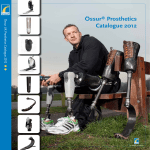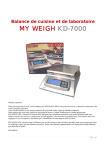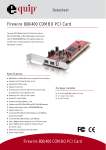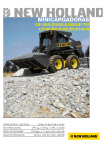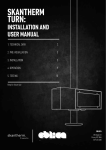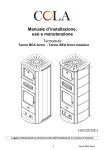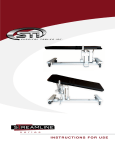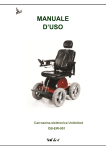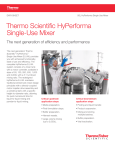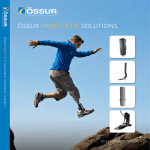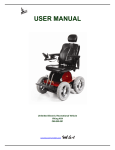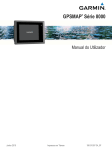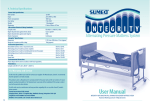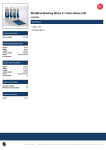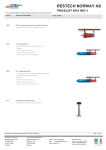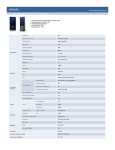Download WIN 250-3/4/5/6 WIN 500-3/4/5/6 WIN 1000-3/4/5/6
Transcript
Electrical multiline pilewind winches WIN 250-3/4/5/6 WIN 500-3/4/5/6 WIN 1000-3/4/5/6 USER MANUAL SIA „WINWOOD” Legal address: „Rasas”, Kurna, Kubuļu District, Balvu Region, Latvia, LV-4566 Actual address: Vidzemes Str. 2b, Balvi, Latvia, LV-4501 Tel.: +371 29440812, Fax: +371 4507040 E-mail: [email protected], http://www.winwood.lv ENGLISH Please read this manual before installing and using WINWOOD pilewind winches WIN250/500/1000 to ensure that the equipment is being used according to safety requirements and manufacturer’s instructions. For additional technical features, installation and service instructions and other information contact WINWOOD Ltd. at www.winwood.lv. This manual is valid for all types of WINWOOD cable winches WIN250/500/1000. Do not apply this manual for devices of any other manufacturers! Winch WIN 250/500/1000 is intended for lifting/ lowering/ stage bars or trusses; hanging and static suspension of loads above head. The equipment should not be used for moving loads – lifting or lowering if any person is under the load. WIN 250/500/1000 is intended only as a part of stage bar lifting system. The safety of whole lifting system, safety of its usage load and other characteristics depend on the system compilation. In case of delivering this particular product, WINWOOD shall not bear responsibility for the operation of the whole lifting system. The equipment complies with essential safety and harmlessness requirements. The equipment is intended for use in the following environmental conditions: - Ambient temperature – 15 Co to +40 Co; - Air humidity - not more than 50% in +40 Co or 90% in +20Co; - Altitude above sea level - not higher than 1000m The equipment has the following technical and electrical parameters: - Applicable electrical voltage 400V / 50 Hz / 3F - Power of electric motor: 1.1 kW – WIN 250; 2,2 kW – WIN 500; 1,5 kW – WIN 1000; - Selfweight of winch Kg: WIN 250-3 /145kg; WIN 250-4 /152kg; WIN 250-5 /159 kg, WIN 250-6 /166kg; WIN 500-3 /170kg; WIN 500-4 /177kg; WIN 500-5 /184kg, WIN 5006 /191kg; WIN 1000-3 /197kg; WIN 1000-4 /204kg; WIN 1000-5 /213kg, WIN 1000-6 /220kg; - Safe working load: 250 Kg – WIN 250; 500 Kg – WIN 500; 1000 Kg – WIN 1000; - Applicable cable - 6mm - Traveling speed – WIN-250, WIN-500 from 150mm/s to 290 mm/s; WIN-1000 from 40mm/s to 70mm/s (with 6mm cable); - Traveling distance – up to 12 000mm (with 6mm cable); - Number of spooling tracks is 3 to 6. The last number of the model name indicates the number of tracks (for example, WIN 250-N, where N – number of tracks). 2 ENGLISH General safety information Upon delivery ensure that the information indicated on the packaging complies with the required one. Ensure that the equipment has not been damaged during transportation. If any damages discovered, immediately inform the carrier. Installation, operation, maintenance and repair are to be performed by properly qualified personnel only. Proper tools should be used. Ensure that the equipment is not under voltage; there is no voltage on clamps; the operations performed shall not cause any dangerous movement or falling of load. Avoid touching body of electromotor while winch working or right after it has been stopped, because the temperature of motor cover may reach up to +50Co during normal operation. The equipment contains parts which are in motion or under voltage during operation. Removing protective cover or electrical control unit cover, as well as inappropriate or incorrect maintenance may cause serious harm to personnel or other equipment. 3 ENGLISH Operational restrictions The equipment is designed for lifting/ lowering loads. Do not use the equipment for any other purposes! Do not lift/ lower humans with this winch! Do not load the equipment more than it is allowed by Safe Working Load indicated on the equipment! Do not use several winches for lifting one load! Do not use damaged or malfunctioning equipment! Do not modify the equipment in any way! Do not divert attention from the winch during operating the system! Do not use the winch if it is impossible to fully observe movement of load! Do not use the winch if there are men under the load! Do not swing or jerk the load while lifting/ lowering! Assembling Installing of winch When choosing placement of winch, provide at least 700mm wide and 2000mm high ails for maintenance! This area should be clearly marked with “Maintenance area – for unauthorised personnel access restricted” Install winch in the position as indicated in this manual (Picture 1)! If it is necessary to install the winch in any other way, contact the manufacturer! 4 ENGLISH 5 ENGLISH Picture 1. Diagram of stage bar lifting system. Examples of placing the winches (1 – winch) Upon installing the winch in the intended place, consider the selfweight of equipment and intended load, including emergency situation! Use appropriate mounting elements! Install the hoists only on plane surface of the foundation and mount with four (4) M12/M16 bolts of respective hardness, washers, and screw nuts with locking device. Ensure that the foundation is adequately strong to withstand the load. It is recommended to use steel plate and/or appropriately located steel beam. The foundation should be designed by qualified personnel. Picture 2. Winch mounting holes in WIN-250-4. 6 ENGLISH If it is necessary to set the system in any other way than described in this manual, it is advisable to contact the manufacturer! Installing lifting cables Upon planning the placement of pulley system of lifting cables ensure that the cables are precisely perpendicular to the rotation axis of the spool and do not rub against the dividing or closing disks! Upon installing the stage bar lifting system use only 6mm cable. Use only cable intended for lifting loads. It is recommended to use a cable by one manufacturer and of one series in all spooling lines to avoid alterations in the diameter of cable. Unscrew the central screw nut and mounting bolts and take off the disks to install the cable to the spool. If more than 4 cable lines are to be installed, pull 2 or more cables through the closing disk, which is the nearest to the gear box and dividing disks. Affix them with the cable clamp plates. The remaining cables pull through the dividing disks in the same way and affix to the closing disk which is the furthest from the gear box. Upon installing cable spools insert the cables in the intended spooling grooves. Screw the spool with bolts, ensure the central castellated nut against loosening with locking pin. Upon affixing the ends of cables with a clamp plates, leave 50mm of cable free. Ensure fixing the ends of cables against loosening. Affix the cables properly, because improperly fixed cables may cause falling of load. The length of lifting cable and installing of limiting switches should be chosen so that there always were two wraps of cable left on the spool. Installing limit switch Limit switch should be initially set when assembling the equipment and every time when system is being changed or rebuild. Limit switches should be installed or adjusted by qualified personnel only. The equipment has two independent limit switches – “travel” and “absolute”. In normal operational conditions the “travel” switch is used. The “absolute” switch is intended for back up in case if an error occurs and “travel” switch does not work. Firstly install the “absolute” switch. The limit switch should be set in the way to limit the maximally possible load movement, taking into account the time necessary for fully loaded system to stop. In this case the “absolute” switch should be installed so that it would not cause any breakage in case of emergency stop of the system. The “travel” switch should be installed to ensure normal operation of 7 ENGLISH the system within the space limited by “absolute” switch. In order to regulate the limit switches, take off body covers of the switches (yellow) by unscrewing the screws. Each limit switch has two switches – Up and Down. “Up” switch stops the lifting; “Down” switch stops the lowering of load. Use bolts (white) to regulate off position of switches. Connect electric and control cables according to the diagram. Picture 3. Electric connection diagram. Maintenance Regularly, prior to each operation session check the functioning of Emergency STOP button. Regularly, but not less than twice per year: - Check screw mounting, lifting cables and electric connections to prevent loosening; - Check condition of lifting cables – there should be no rust, rupture, damage, breakage, deformation or any other damage. If there are any damages discovered, replace the damaged part; - Check tightening of cables to be equal. Regulate the tightening if necessary; - Check if the equipment operates without excess non-typical noise or vibration. Repair the equipment if necessary; - Check for any oil spillage from the gear box. Contact the manufacturer if necessary; - Check tightening of driving gear belt of the limit switch. Regulate it if necessary; - Check operation of limit switch. Adjust it if necessary; - Check motor brakes. Regulate them if necessary. 8 ENGLISH - Check if identification marking is visible and well-fixed. Results of inspections, information about repairs performed should be recorded in the maintenance register. Note This manual may be amended without prior notice. 31.08.2011. 9









